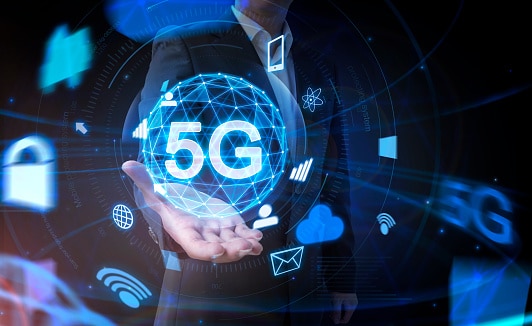Introduction:
The fifth-generation mobile network or 5G is the latest iteration in the field of mobile network technology, and it promises to revolutionize the way we use mobile networks. The development of 5G requires advanced technologies and innovative solutions that can handle high speeds, low latency, and massive data transfers. In this blog post, we will discuss the technologies that will make 5G happen and some of the issues related to its implementation.
5G is the latest buzzword in the world of technology, promising to deliver faster data transfer speeds, lower latency, and massive connectivity. It is not just an evolution of the existing 4G network, but a complete transformation of the way mobile networks work. 5G will enable new use cases such as autonomous driving, remote surgery, and virtual reality, which were not possible with the existing technology. However, the development of 5G requires advanced technologies and innovative solutions, which can handle the massive amounts of data that will be transferred over the network. In this blog post, we will discuss the technologies that will make 5G happen and some of the issues related to its implementation.
Important Points:
- Small Cells: Small cells are low-powered, short-range base stations that can be deployed in large numbers to provide coverage in densely populated areas. They are a critical component of 5G networks because they can handle high-speed data transfers and provide better network coverage in urban areas.
- Virtualization: Virtualization is the process of creating a virtual version of a resource, such as a server, network, or storage device. In 5G, virtualization is used to create virtual networks that can be customized and optimized for different use cases, such as smart cities, autonomous vehicles, and virtual reality.
- Edge Computing: Edge computing is a distributed computing architecture that brings computation and data storage closer to the user or device, reducing latency and improving performance. In 5G, edge computing is used to process data in real-time, enabling new use cases such as autonomous driving, remote surgery, and virtual reality.
- Massive MIMO: Massive MIMO (Multiple Input Multiple Output) is a technology that uses multiple antennas to transmit and receive data simultaneously, increasing network capacity and improving data rates. It is a critical technology for 5G because it enables high-speed data transfers and supports multiple users simultaneously.
FAQs:
1.What is the main advantage of 5G over 4G?
A: The main advantage of 5G over 4G is its higher data transfer speeds, lower latency, and support for a massive number of connected devices.
2.Will 5G replace Wi-Fi?
A: 5G is not designed to replace Wi-Fi but rather to complement it. 5G can provide high-speed data transfers and low latency for mobile devices, while Wi-Fi can provide high-speed data transfers for stationary devices.
Pros:
- Higher Data Transfer Speeds: 5G promises to deliver data transfer speeds that are up to 100 times faster than 4G, enabling new use cases such as autonomous driving, remote surgery, and virtual reality.
- Low Latency: 5G networks have significantly lower latency than 4G networks, enabling real-time applications such as autonomous driving and remote surgery.
- Massive Connectivity: 5G networks can support up to 1 million connected devices per square kilometer, enabling new use cases such as smart cities and the Internet of Things.
Cons:
- Limited Coverage: 5G networks have limited coverage compared to 4G networks, and it will take time and investment to build out the necessary infrastructure to provide coverage in all areas.
- Cost: The implementation of 5G requires significant investment in infrastructure, spectrum, and equipment, which can be a significant cost for network operators.
Final Conclusion:
5G is a game-changing technology that promises to revolutionize the way we use mobile networks. It requires advanced technologies such as small cells, virtualization, edge computing, and massive MIMO to deliver high-speed data transfers, low latency, and massive connectivity. However, the implementation of 5G also presents challenges such as limited coverage and high costs, which will need to be addressed to realize the full potential of this technology.
The development of 5G is a complex process that requires the implementation of advanced technologies such as small cells, virtualization, edge computing, and massive MIMO. These technologies will enable the high-speed data transfers, low latency, and massive connectivity that are the hallmarks of 5G networks. However, the implementation of 5G also presents challenges such as limited coverage and high costs, which will need to be addressed to realize the full potential of this technology. Despite these challenges, 5G has the potential to revolutionize the way we use mobile networks and enable new use cases that were not possible before. The world is eagerly waiting for the full-scale deployment of 5G, and the benefits it will bring to our daily lives.







